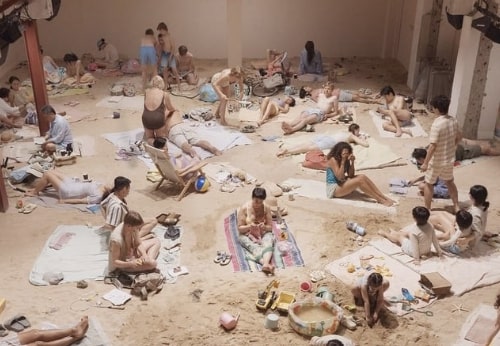
Why Did People in the Joseon Dynasty Never Had a Haircut?
Korean ancestors from the Joseon Dynasty have never had a haircut all their lives to be respectful of their parents.

“Our bodies, bones, and skin are all received from our parents; therefore, filial piety starts from preserving them to not be damaged or injured.”
It’s the saying from ‘The Book of Filial Duty’ by Confucius.
In Korean and Chinese characters :
신체발부 수지부모
(shin-che-bal-boo soo-ji-boo-mo)
身體髮膚 受之父母
These types of sayings are referred as ‘‘Go-sa-sung-uh’ (고사성어), an idiom derived from Ancient Chinese characters.
‘Go-sa’ (고사) refers to historical events with long history and ‘sung-uh’ (성어) refers to an idiom created by ancestors.
The Joseon Dynasty was created under the theoretical foundation of *Neo-Confucianism, which emphasized the doctrines and teachings of Confucius. His teachings include morality, justice, kindness, sincerity, respect for parents, and more. Confucius’s ‘The Book of Filial Duty’ emphasizes the importance of being a good daughter/son to one’s parents: 신체발부 수지부모.
Cutting their hair would be considered not being a good daughter/son as hairs are also parts of the body received from the parents.
The braided hairstyles were a sign of youth.


댕기 (daeng-gi), a yellow ribbon in
the picture, is a traditional Korean
ribbon used to tip up and decorate a
girl’s braided hair.

Hoyeon Jung with a braided hairstyle. She decorated her
hair with 댕기 designed by Louis Vuitton. She thought
this traditional Korean hairstyle would go well with the
dress and requested Louis Vuitton to make 댕기.
In the period of the Joseon Dynasty, little children and unmarried men and women braided their long hair, and therefore, braided hairstyles were a sign of youth.
A sign of adulthood was a “pulled up” hairstyle.

관례 : the coming-of-age ceremony for boys
The ceremony for boys is called 관례 (gwan-rye)
For boys reaching the age of 15, they were able to hold the coming-of-age ceremony. The ceremony usually takes place between the ages of 15 and 20. It was to celebrate a young person entering the world of adulthood and being responsible for his family. Regardless of the marital status and age, a man is treated as an adult with respect after the ceremony.
It consists of three stages :
1. 가례 (ga-rye) : a boy ties up his hair in a top-knot and changes clothes three times. Changing clothes three times signify the heavy responsibilities of adults.
2. 초례 (cho-rye) : a boy drinks alcohol. This is the step in which a boy promises to set an example as an adult.
3. 자관자례 (ja-gwan-ja-rye) : A boy is given “Ja”, which refers to the name a boy will use as an adult.
This is just a brief explanation of the ceremony and there are so many more complicated steps.

계례 : the coming-of-age ceremony for girls
The ceremony for girls is called 계례 (gye-rye).
Girls pull up their hair with a hairpin as proof of becoming an adult. However, it was not as generalized as a man’s ceremony. 계례 was usually practiced during a wedding ceremony.
FYI: The legal age for marriage in the Joseon Dynasty was 15 for men and 14 for women and people usually got married when they are 17 to 19.
In these pictures (and drawings) of the late Joseon Dynasty, you can see children with braided hair, men with a top-knot, and women with pulled up hair.







